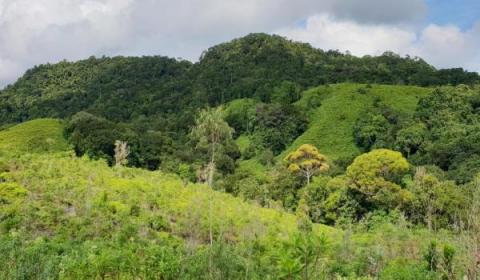Restoration and management of degraded land adjacent to Kanneliya Forest Reserve
Project title: Restoration and management of a degraded fern land adjacent to Kanneliya Forest Reserve
Location: Sri Lanka
Duration: 2018-2022
Project background:
Sri Lanka is endowed with a diverse and unique assemblage of fauna and flora. Many of these species are running the risk of extinction due to number of threats. Habitat loss and fragmentation are the most significant threats contributing to biodiversity loss in Sri Lanka. During the last century alone, Sri Lanka’s natural forest cover has declined by about 50% and continues to decline even at present at a rate of approximately 7,000 ha per year. 30% of dry zone forests are lost or degraded, while biodiversity-rich wet zone forests have become highly fragmented.
Therefore, one of the key conservation strategies proposed in the National Biodiversity Strategic Action Plan (NBSAP) 2016-2022 is to minimise the loss of forest cover and at the same time restore degraded forests and initiate reforestation programmes. Most of the reforestation efforts to date have used non-native species such as eucalyptus, pine, teak, mahogany, chaya, wild tamarind and acacia, as the main objective has been timber production rather than biodiversity conservation. In addition, a number of private sector companies also invested in reforestation projects to meet various objectives such as fuelwood production, carbon offsetting and biodiversity conservation.
Most reforestation programmes have been conducted with the primary objective of forest restoration, and the exact benefit of these programmes to the ecosystem and to ecosystem services have not been measured in a scientifically rigorous manner. As a result, the full benefits of reforestation in terms of enhancing biodiversity and their ecosystem services have not been demonstrable. This makes it difficult to concretely justify conservation to high-level stakeholders, which makes it challenging to obtain investment. This lack of understanding has been a major barrier to environmental conservation in Sri Lanka.
Therefore, IUCN Sri Lanka, in partnership with Biodiversity Sri Lanka, the Forest Department, and Private Sector partners, are piloting a project to reforest 10ha in the Kanneliya Conservation Forest by applying an ecological restoration modelling approach. As the preliminary step of the project, a detailed plan has been developed for the restoration and management of the identified block. This scientific approach to ecosystem valuation and to measuring benefits to biodiversity is expected to create a transformational change in the way we estimate ecosystem services and in decisions on conservation-related investments.
Objectives of the project:
The key project objectives are to;
- Implement the restoration and management plan with the participation of all relevant stakeholders
- Continuously monitor and evaluate the forest regeneration process (within the project period)
- Develop a model to test the feasibility of introducing a biodiversity credit accrual system to Sri Lanka
Outputs:
By the fifth and final year of the project, ten hectares of land to be planted with well-established wild vegetation, which will grow into a natural forest and mimic the species composition of the adjoining natural forest.
Donors: Biodiversity Sri Lanka
Partners: Sri Lanka Forest Department

